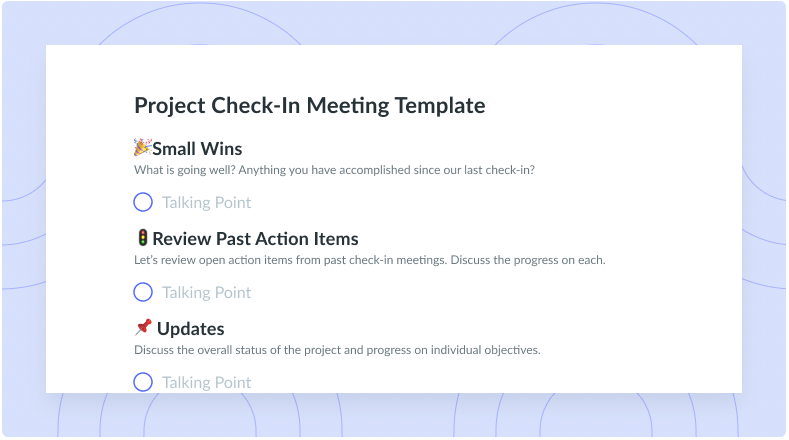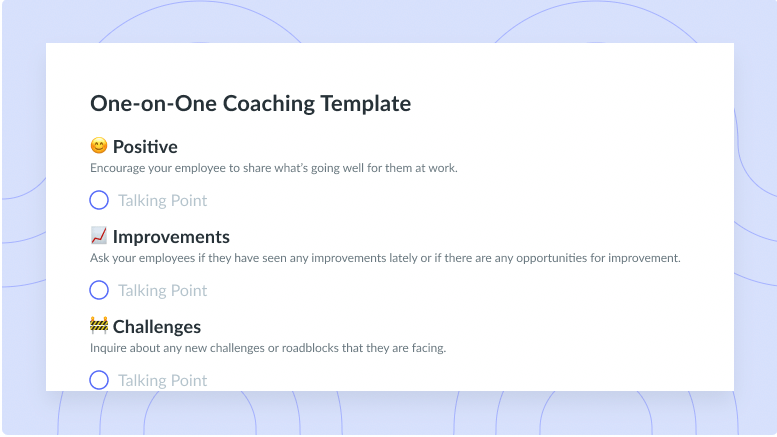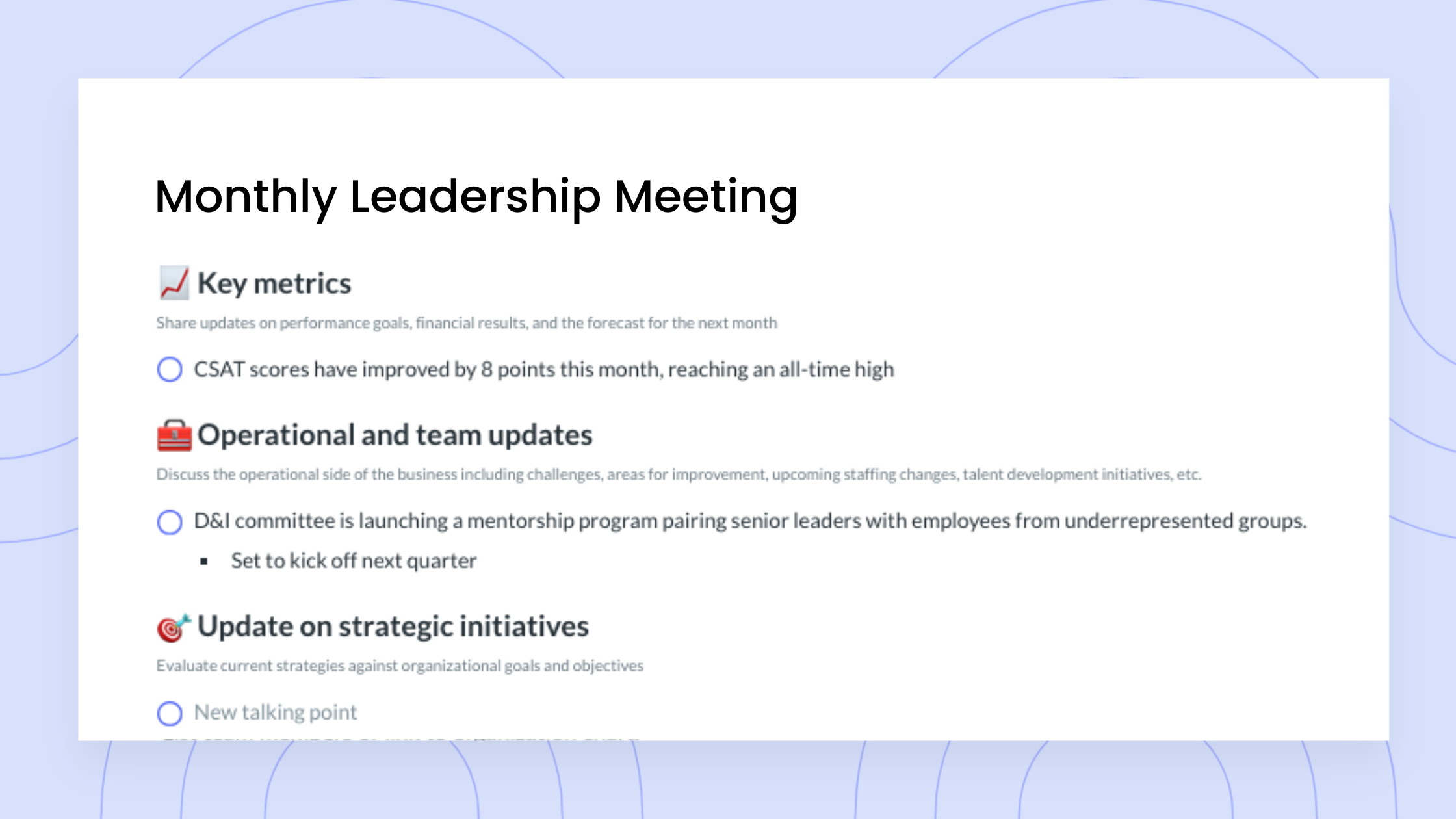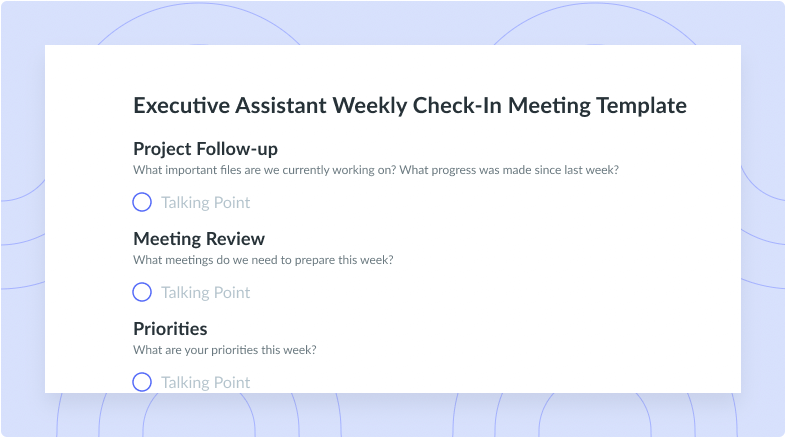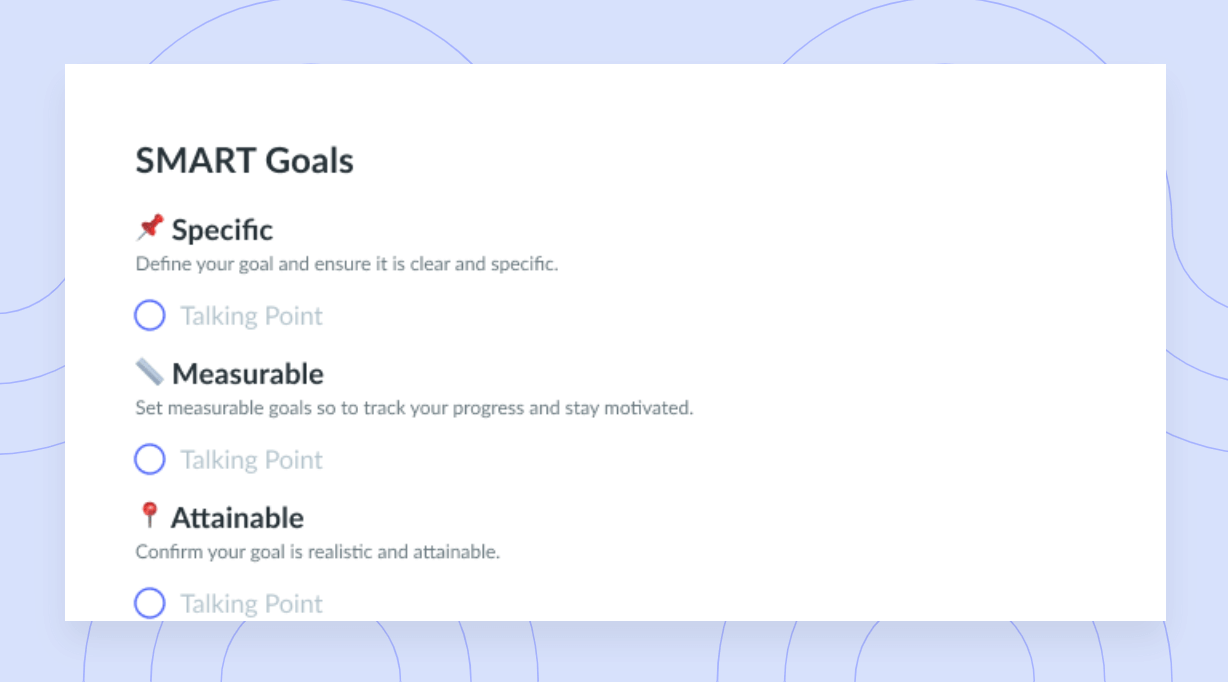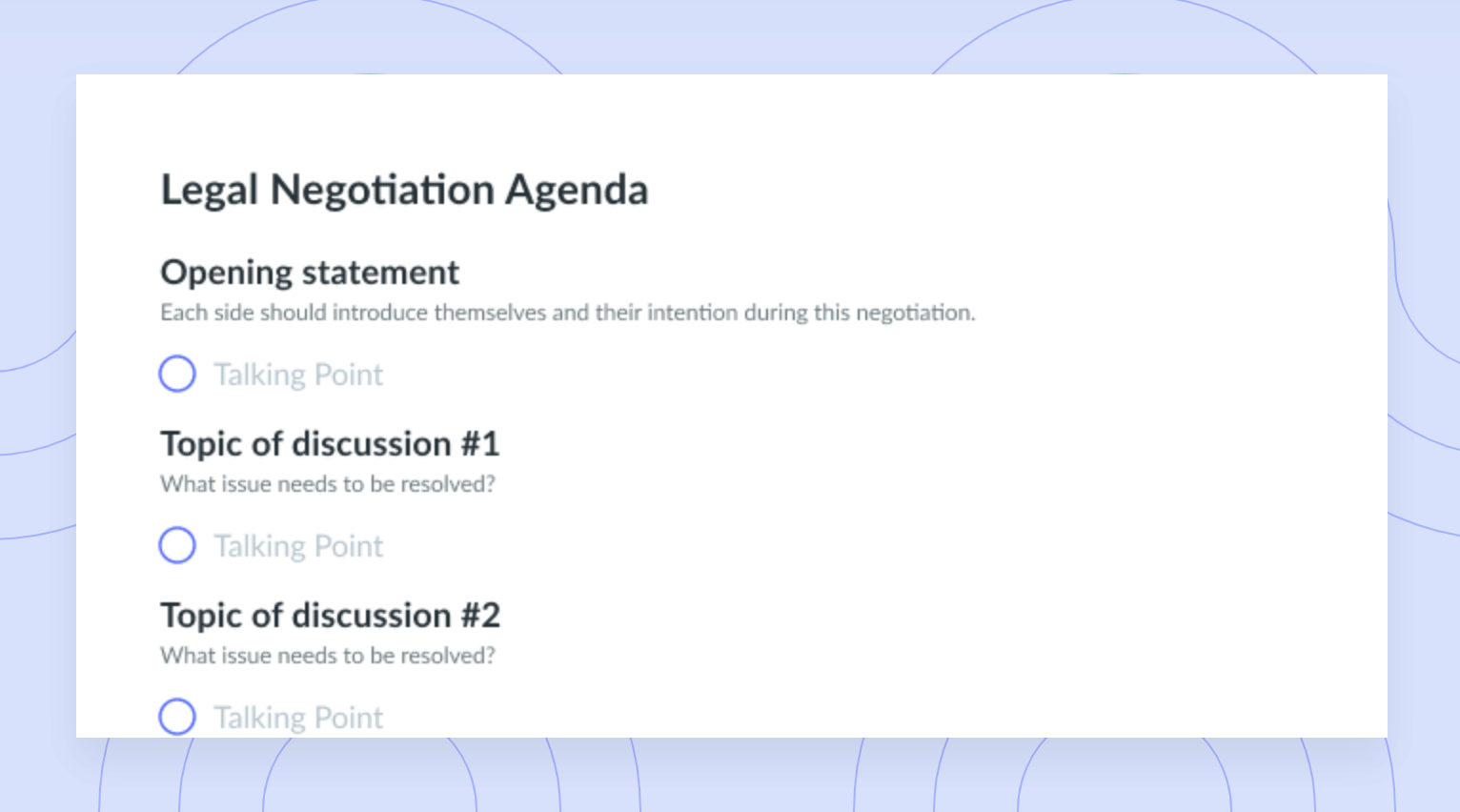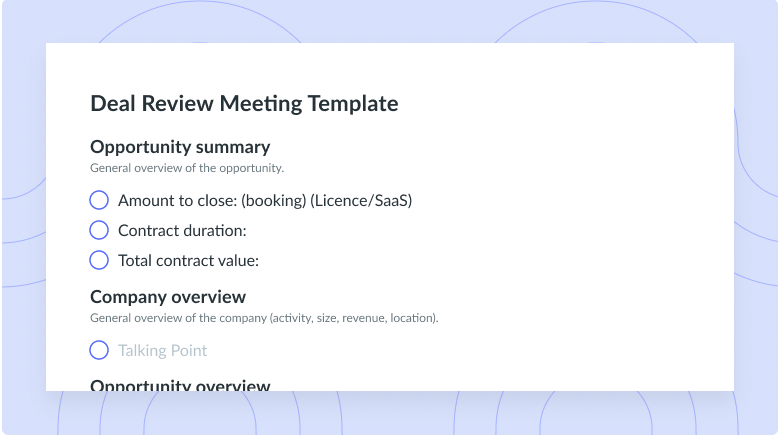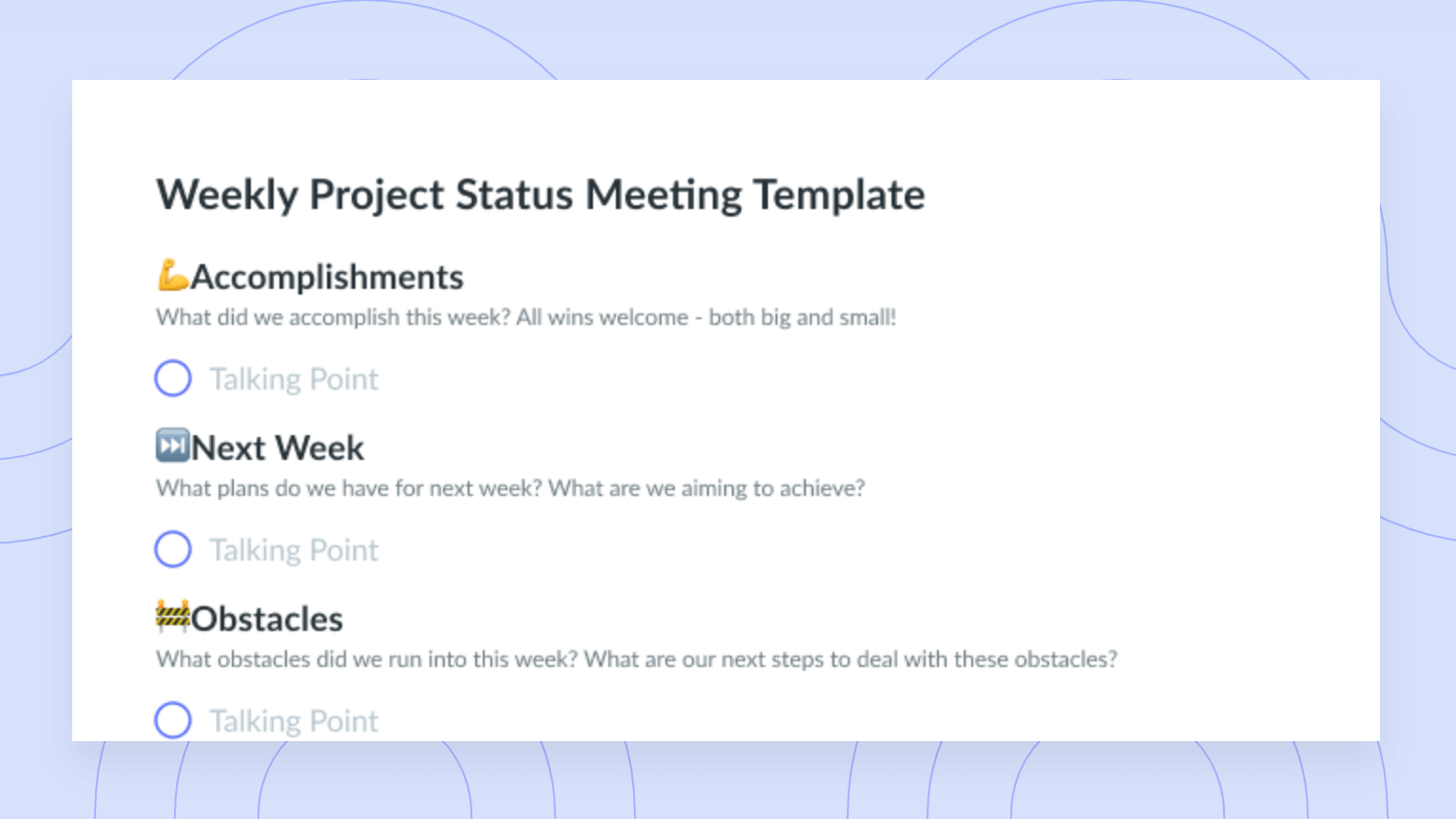5 Ways to Enhance Employee Engagement With AI
Leveraging AI for employee engagement can skyrocket your team’s morale, productivity, and creativity! Learn how here.
Artificial intelligence (AI) is on the rise, and everyone’s searching for the best way to use it to their advantage. Early studies have already proven that the use of AI in the workplace can have positive effects on employers and their workers. One implementation strategy is through boosting employee engagement, which is measured by the employee net promoter score (eNPS), so we’ve compiled a few of our top tips and the benefits of using AI to improve your team’s eNPS this year!
- What is employee engagement?
- 5 ways that AI can drive employee engagement
- Things to consider when looking for an AI engagement tool
- How better meetings can lead to better engagement
What is employee engagement?
Employee engagement is one of the metrics that businesses commonly use to determine their success. Employee engagement is measured by the eNPS score, which is calculated from a survey provided to employees once or twice a year. This metric gives an idea of how interested, motivated, purposeful, aligned, and involved team members feel. The eNPS score for a company can range from -100 to +100. As of today, the average score is +32 but the ideal score is above +50, meaning most companies still have a lot of work to do when it comes to their employee engagement strategies.

Revolutionize engagement with AI-powered collaboration
Boost team engagement using AI to foster seamless communication and productivity. Witness a new era of employee involvement with Fellow’s AI-powered features.
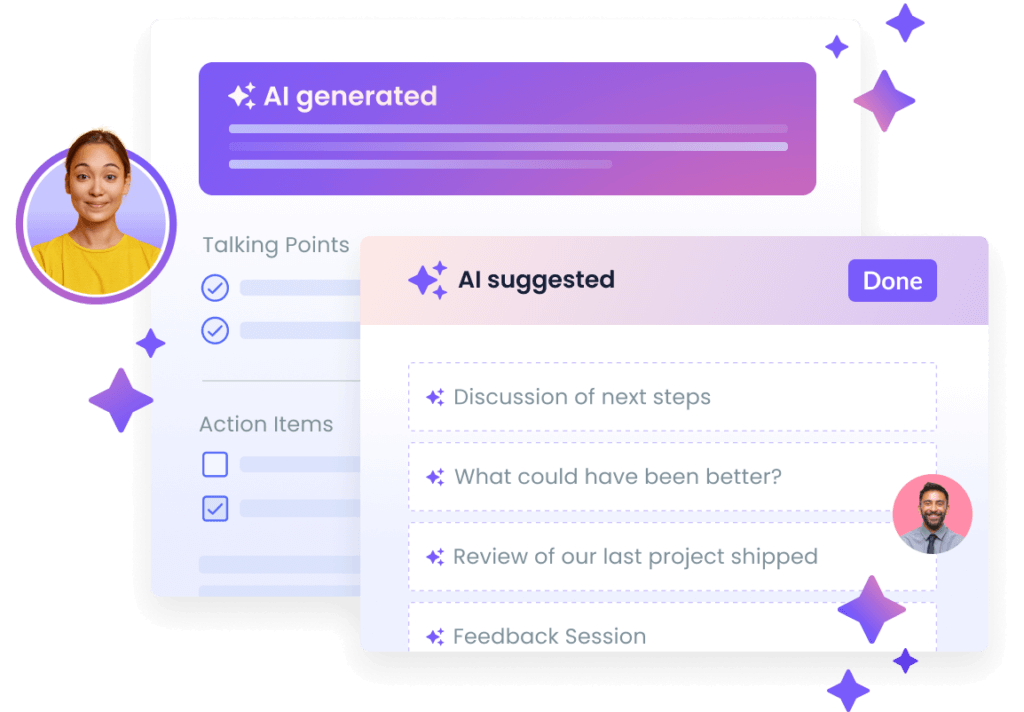
5 ways that AI can drive employee engagement
- Creates a feedback loop
- Improves communication
- Fosters a culture of learning
- Encourages collaboration
- Enhances personalization
1Creates a feedback loop
A feedback loop enables fast and consistent feedback across the team. The more frequently your team members receive feedback, the more they’re able to continuously improve on projects. AI can help boost this by automatically integrating feedback prompts into each of your meeting agenda templates. This is super helpful for teams that are new to asking and receiving feedback, as they may not be sure how to navigate that type of conversation.
Additionally, AI tools can automatically distribute feedback surveys to collect insights from participants after an event or meeting. This saves the event organizer lots of time and still gets them the information needed to make the next session even better!
2Improves communication
According to Falon Fatemi, AI tools can analyze conversations to gauge how well teams communicate and problem-solve together. He says,
“AI is able to leverage natural language processing and sentiment analysis to unearth employee morale and engagement. What types of language phrases do employees use in text-based conversations such as email? What types of emojis do they use on platforms such as Slack? These factors are revealing.”
Understanding where communication issues lie can help managers quickly identify and mitigate those concerns. It also helps hold teams accountable for how they interact with other departments and stakeholders.
3Fosters a culture of learning
One of the best parts about AI tools is how seamlessly they fit into everyday processes. This makes it easy for team members to get answers as needed on the fly and even get some pop-up insights handed to them as well! As teams collect information, they can store it in a centralized space. AI tools can then synthesize and organize the knowledge to make it easier for other team members to understand. Not only does this make learning more digestible, but it also makes it more accessible for team members with disabilities or different learning styles.
4Encourages collaboration
For a small team, collaboration might seem easy as it’s just a few people working in close quarters all the time. But at scale, teamwork is tough. AI can support effective collaboration through the automatic distribution of team assets, tracking of time contributions to the project, and notifications of upcoming action items that are due. This saves time on administrative tasks and helps teams stay accountable for working together to meet common objectives.
5Enhances personalization
Instead of a one-size-fits-all approach to employee engagement, AI helps you personalize engagement approaches to the individual. This might mean adjusting a training program to something that suits a different learning style, for example. AI can also help with identifying delays and challenges faced by individual team members, which can notify a manager to reach out and assist. For example, a manager could get an alert when an employee is spending more than the average time required for a given project. When employees feel supported, they’re able to meet their goals and are much more likely to input a high eNPS score!
Things to consider when looking for an AI engagement tool
- How much value will the tool add?
- What is the implementation process?
- How intuitive is the tool’s interface?
- Who will be responsible for adopting the tool?
How much value will the tool add?
There’s an incredible amount of AI tools on the market. Rather than getting a unique tool for each specific need, consider if there’s an AI tool that can help you meet multiple needs. The more valuable a tool is, the more worthwhile it is to go through the onboarding and implementation process for it. At the same time, don’t just choose an AI tool that has a ton of features if you aren’t going to use most of them. The most valuable AI software products are the ones that will actually be useful in helping you earn revenue, boost employee productivity, and drive up your employee engagement scores!
What is the implementation process?
Some AI engagement tools are ready to use when you purchase them, and others require a ton of customization before they’re useful. Do some research into the level of effort required to be able to pull value out of the tool. Another factor that might add to your implementation effort calculation is the ability of your chosen AI tool to integrate with your existing tech stack. Make sure that all of your technology programs are compatible with each other so you can pull more value and minimize any risk of lost data! Finally, also dig into any information about onboarding and training requirements. More complex tools might need your team to complete a formal training program before being able to start using it, which adds time and costs.
How intuitive is the tool’s interface?
Since there’s a range of technology skills in the workforce, there’s also a range of AI engagement tools to support different abilities. Think of the employees who will be working with the tool often. Are they managers who haven’t had a lot of exposure to other software tools yet, or are they part of a team of developers that is frequently customizing software programs? If you’re unsure, it’s best to consult the end users of the tool before purchasing it to make sure they would be comfortable using it. Again, you might want to consider if any training is necessary when first starting out.
Who will be responsible for adopting the tool?
Purchasing a fancy new AI tool sounds great, but if no one is in charge of making sure it’s used purposefully, then it doesn’t actually hold a ton of value for your team. If you’re passionate about preventing shelfware in your organization, you’ll need to have one person accountable for the implementation and lifetime management of the tool. This person is responsible for ensuring all teams are able to use the tool effectively and reporting the value of the tool to management. Larger companies may also have digital transformation teams that are responsible for overseeing this role.
How better meetings can lead to better engagement
On average, employees attend 11 to 15 meetings per week. That’s a lot of time when your team is already collaborating, making meetings a great place to focus on improving employee engagement with AI.
In your meetings, you can leverage a tool like Fellow that helps teams effectively brainstorm, discuss, and create action plans. With Fellow’s AI-powered features, such as suggested agendas built at warp speed for organized meetings, simplified meeting summaries and key points for efficient knowledge sharing, captured and synced action items to ensure nothing falls through the atmosphere, and more, you can rest assured that your meetings will lead to better engagement. Fellow also helps you:
- Ensure time is spent on purpose-driven work. Fellow will automatically track how much time teams are spending in meetings. As a manager or team lead, comparing that time spent in meetings to the value pulled from those discussions is a great way to measure how purposeful and goal-focused your team’s conversations are.
- Continuously improve your efforts. At the end of each meeting, automatically distribute a feedback survey to see where you can do better next time. This helps your team develop a growth mindset that’s focused on learning and improving.
- Enable efficiency. Set your team up with one of Fellow’s 500+ pre-built meeting agenda templates that guide them on the important points to cover. This makes sure meeting time is used wisely and your employees have more of their day back to help the business grow.
To learn more about Fellow’s AI-powered features and how they can help you run better meetings, resulting in better engagement, check out this video:
Parting advice
Even though AI is on the rise, it’s still got a long road full of innovation ahead of it. Integrating AI into your employee engagement strategies will help your team learn faster, grow better, collaborate easier, and see deeper insights than you would have any other way! As a result, you’ll have a far-above-average eNPS score so you can keep hiring and retaining great talent while your business grows.
![How to Write a Meeting Recap [With Templates]](https://fellow.app/wp-content/uploads/2021/02/Meeting-Recaps.jpg)








